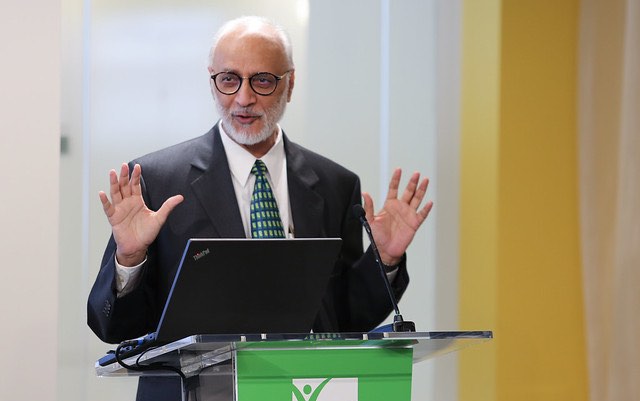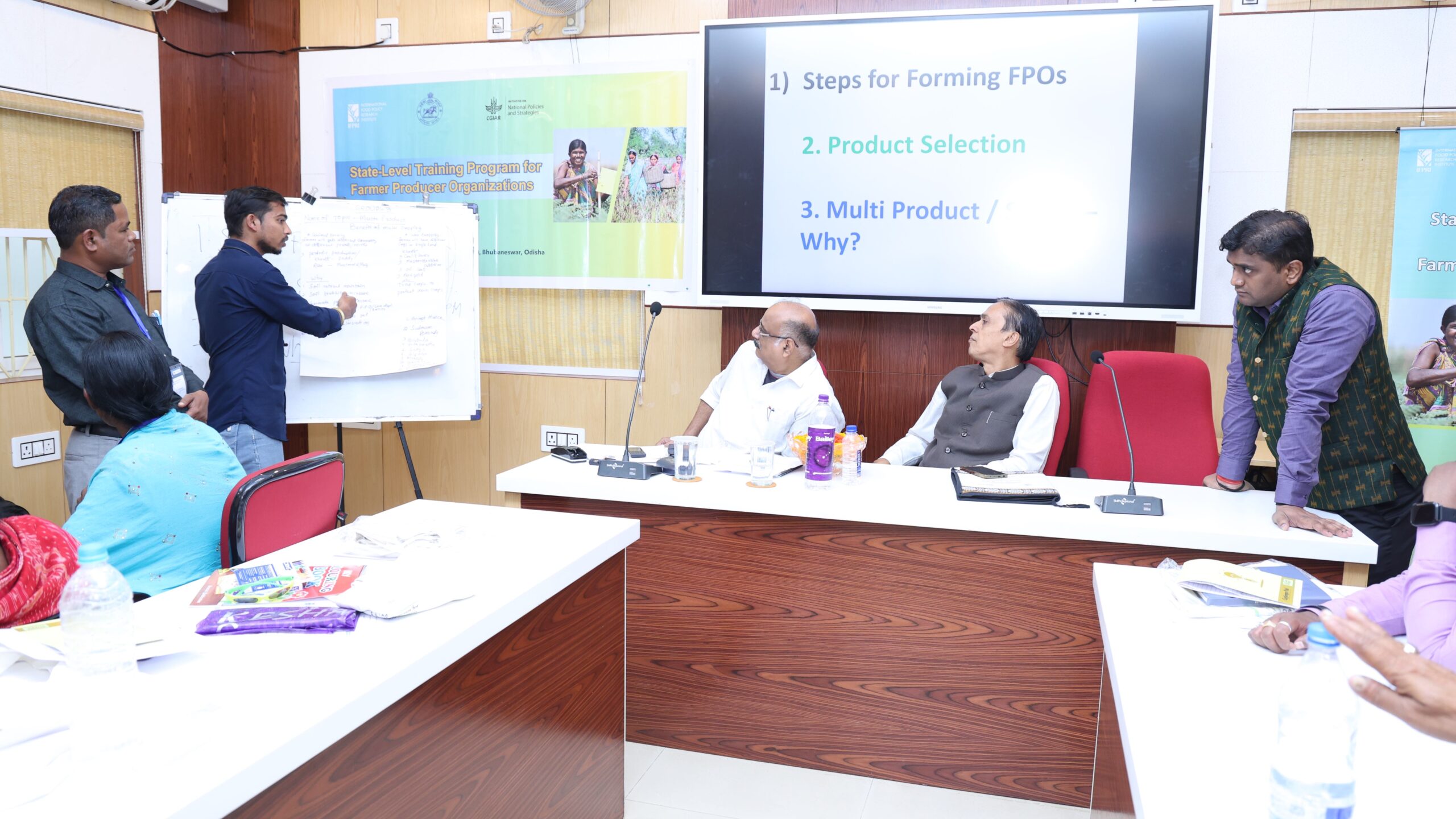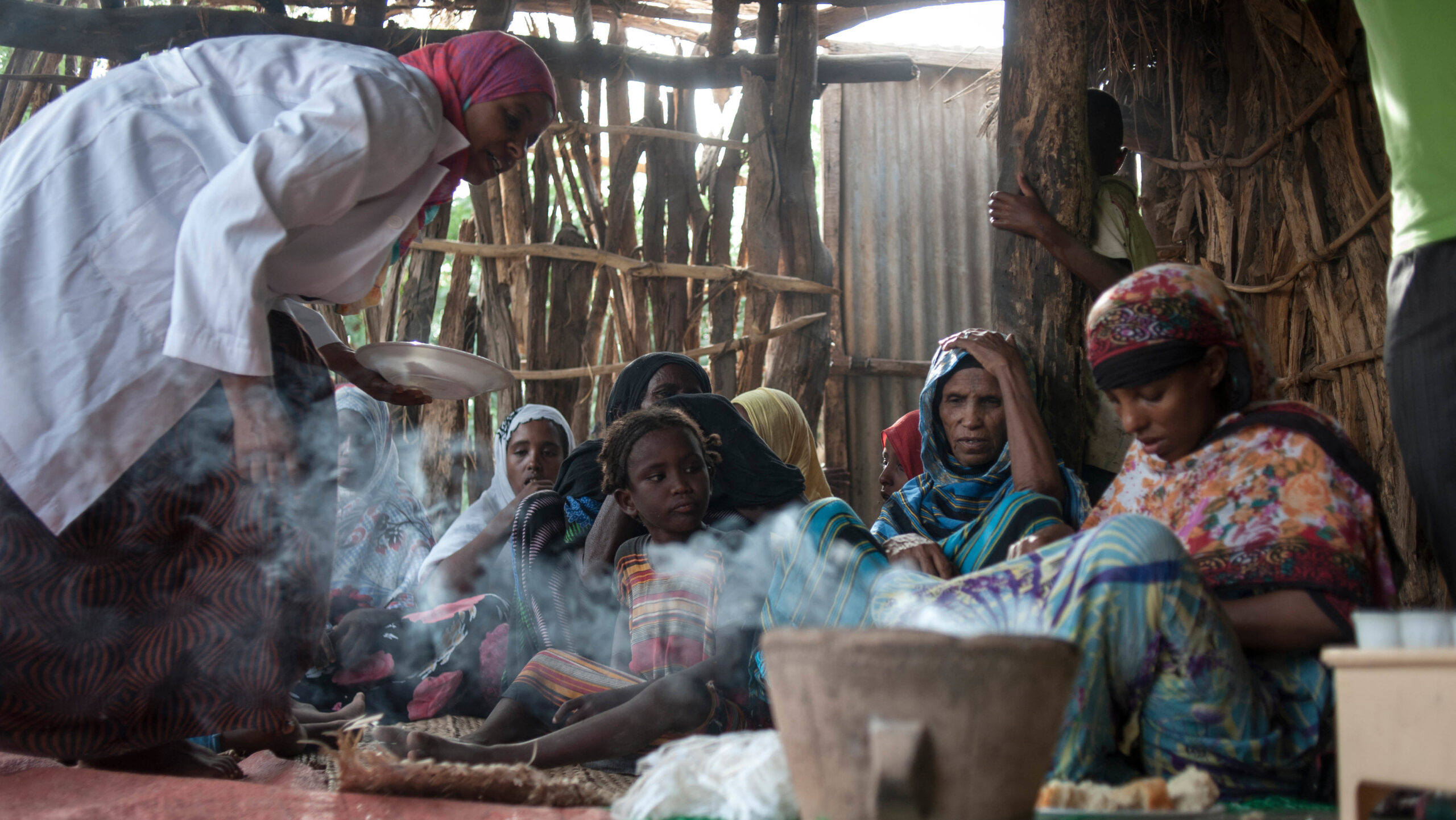Who will feed India? The country’s population will soon be larger than China’s, economic growth is averaging 7 to 8 percent, and cities are expanding rapidly. India’s rapidly evolving food needs present a major challenge for agriculture and food systems. A March 22 IFPRI seminar, co-organized with the University of Pennsylvania’s Center for the Advanced Study of India, explored this key question.
Keynote speaker Ashok Gulati, Infosys Chair Professor for Agriculture at the Indian Council for Research on International Economic Relations (ICRIER), examined the political economy of India’s current agricultural policies and their implications for future food security.
Gulati outlined some of the emerging challenges. India is a current net exporter in agriculture, he noted, and the largest exporter of rice globally; but by 2024, when it is projected to have the world’s largest population, 65% will be under age 35; demand for food will be high, and demand on a decreasing water table will be massive; and over 600 million people will be living in urban areas.
India offers less support to farmers than many other countries, he said. Producer support to farmers in China and OECD countries exceeded $230 billion in 2016-17, he said, while India continued to tax its farmers.
“Indian policymakers have to walk on a very, very thin razor edge situation” regarding farm support, he said. If prices increase or decrease by 15%, either consumers or farmers would react negatively. In addition, he said, the Indian government’s policy of imposing export bans when prices rise restricts the freedom of the private sector.
Yet India has also made positive policy changes, he said. It overhauled dairy production during its “White Revolution” in the 1970s, and industry growth accelerated even further after total delicensing (opening up to private investment) in 2002, making India the world’s largest milk producer, with almost double the second largest’s volume. In addition, trade policy changes led to positive transformation in the poultry sector.
Proper incentive structures are needed for the private sector and to create a neutral playing field for farmers, he said, to correct for the “inbuilt consumer bias” of recent years.
Why are Indian agricultural policies seemingly more pro-consumer than pro-farmer? “Fundamentally, in India, no one really believes in markets and that is a bottom line and we need to grapple with that reality,” said Devesh Kapur, Starr Foundation Professor of South Asian Studies and director of Asia Programs at the Johns Hopkins School of Advanced International Studies (SAIS). The current government is pro-business, he said, but not pro-markets. This model prevents markets from allocating scarce goods and market price mechanisms from functioning—in the case of farmers, when, to whom, and where they can sell their products are all subject to government control. Removing these barriers, Kapur concluded, will liberate and offer hope for Indian farmers.
Citing OECD data between 2002 and 2016, IFPRI Senior Research Fellow Joe Glauber said that India’s continued heavy taxation of producers is problematic, though it has begun declining recently. The government’s recent policy shift away from market price supports to income support is encouraging, Glauber said, as are infrastructure upgrades. The “improvement of roads, rails, other things to move products from inland markets to consumer areas to export are things that will improve prices the most for producers and stimulate production,” Glauber said.
“As an Indian woman, I feel somewhat outraged that we haven’t done anything on women” in reforming agricultural policies, said Uma Lele, president-elect of the International Association of Agricultural Economists. Comparing China’s and India’s investments in agriculture, Lele noted that India lags considerably in areas including irrigation, R&D, and the intensity of research and extension services. Women in India could make great strides toward increasing productivity growth if given more access to credit and land rights.
Addressing the “who will feed India” question, Gulati concluded on a hopeful note: “I feel India is likely to remain self-sufficient, maybe marginally surplus, at least up to 2030,” he said. “Nutrition and malnutrition is a 20-year battle that India will have to fight, but I am a great fan of biofortification and also what Indians are doing with zinc-rich wheat and rice…I think India will be able to take care of itself.”
Katarlah Taylor is an IFPRI Senior Events Specialist.







